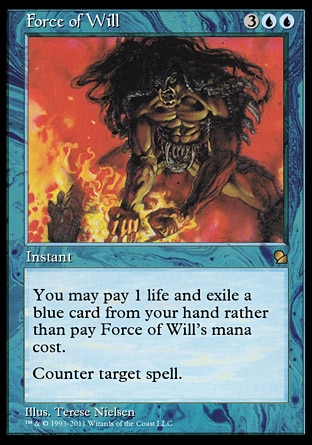Andrea Mengucci is an expert Magic: the Gathering player known especially for his love for the Legacy format. One of the defining features of Legacy gameplay is the presence of very powerful nonbasic land cards. The format’s most important check on its nonbasics is Wasteland, which can sacrifice itself to destroy another nonbasic land. In this clip, Andrea is playing against a Wasteland deck and finds himself faced with one of the Legacy format’s classic forks in the road: should he spend his turn’s land drop on a more flexible/powerful nonbasic or a less-vulnerable basic land?
Lands are important because they typically produce mana, the resource used to cast spells. Sacrificing a Wasteland to destroy a nonbasic sets both players back on their mana development by a turn. When does activating Wasteland favor a Wasteland player? Andrea points out two long-recognized ways to profit from the mutual attrition.
The usual use of Wasteland is what Andrea calls here a “tempo Wasteland” that sets both players back on mana at a moment in which the Wastelander has a superior board presence (e.g. 1 creature against 0, as in the clip). The Wastelanding player seeks to preserve their advantaged board state as long as possible, as the onus is on opponent to find some relevant and castable spell to equalize. If they did not have a way to equalize with last turn’s mana, and one uses a Wasteland to set them back to that same mana, they probably will still be unable to equalize for at least another turn cycle.
The second type of Wateland is more brutal, hoping that the opponent does not have any more lands in hand to replace what was destroyed, leaving the player’s spells stranded in hand, uncastable until they draw lands from their deck.
In the video, Andrea recognizes that he is behind on board, as the opponent got to play first and has a Deathrite Shaman out while Andrea has nothing on the battlefield to oppose. Playing out a nonbasic land would open him up to being punished by a Wasteland that would preserve the imbalance of power. Andrea wisely chooses to play out a basic land to ensure that he will have two mana available on his second turn.
